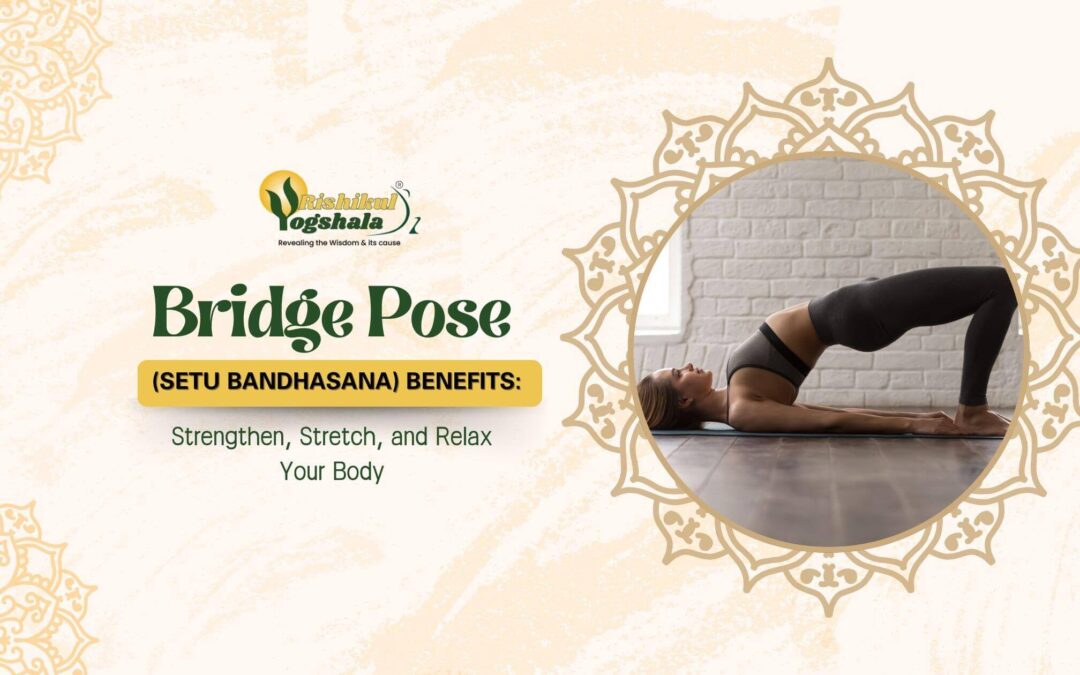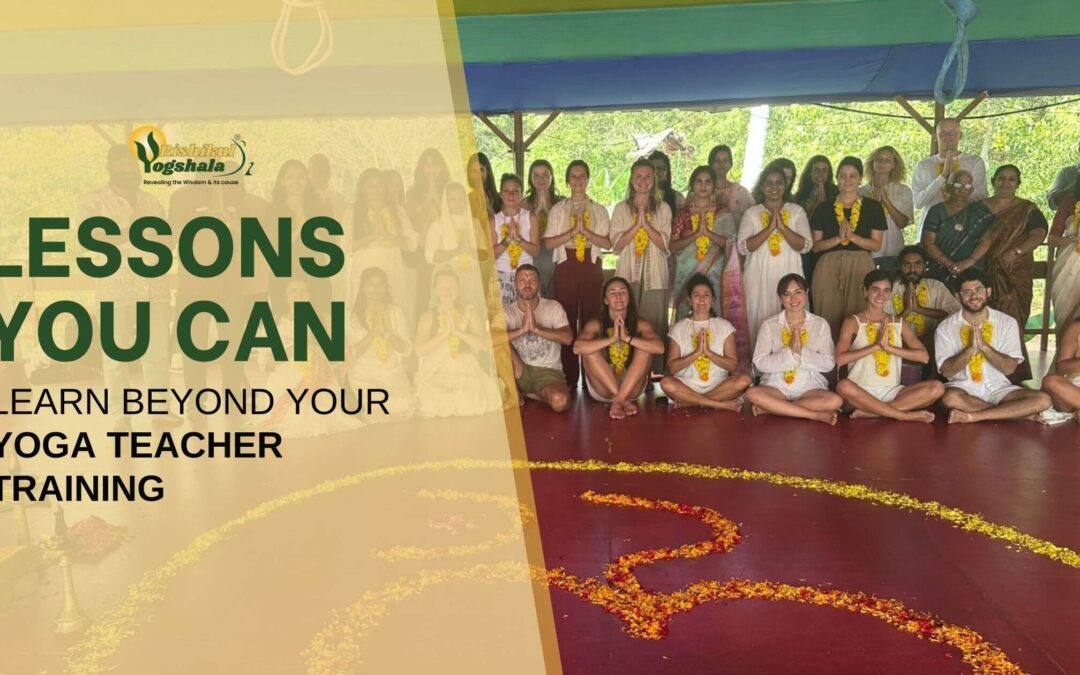How to Become A Registered Yoga Teacher with Yoga Alliance
- Blog
- /
- Yoga Teacher Training and...
- /
- How to Become A...
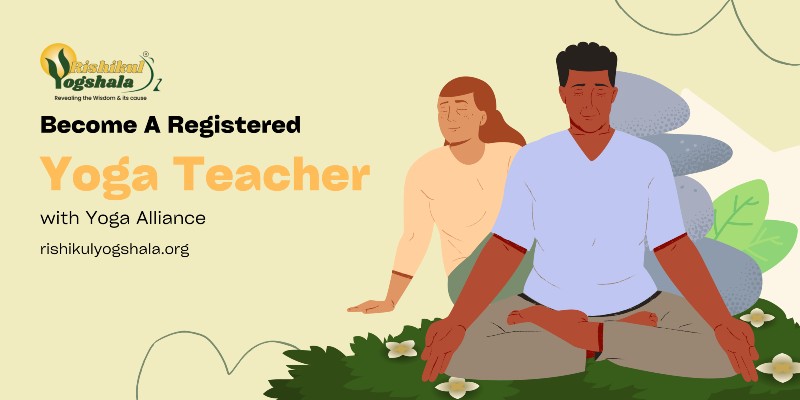
Out of my own curiosity, I happened to search for the topic “yoga teacher training” on Google Trends, and the yearly trends tell me something.
People have been constantly looking up the topic, suggesting they are seeking a suitable program or course for themselves. Yoga has simply exploded in popularity, and certification through Yoga Alliance creates that credibility and recognition factor, ensuring you can easily share that passion with others.

If you are passionate about deepening your practice and would love to share that with others, then read on as I take you through the process of becoming a certified teacher.
What is Yoga Alliance?
Yoga Alliance is a nonprofit organisation establishing standards of yoga education throughout the world. This organisation keeps a record of schools and teachers that meet their measures of quality and integrity. Once you have completed a registered yoga teacher training program from an accredited school, you can apply to become an RYT or Registered Yoga Teacher. This will grant you permission to teach throughout the world.
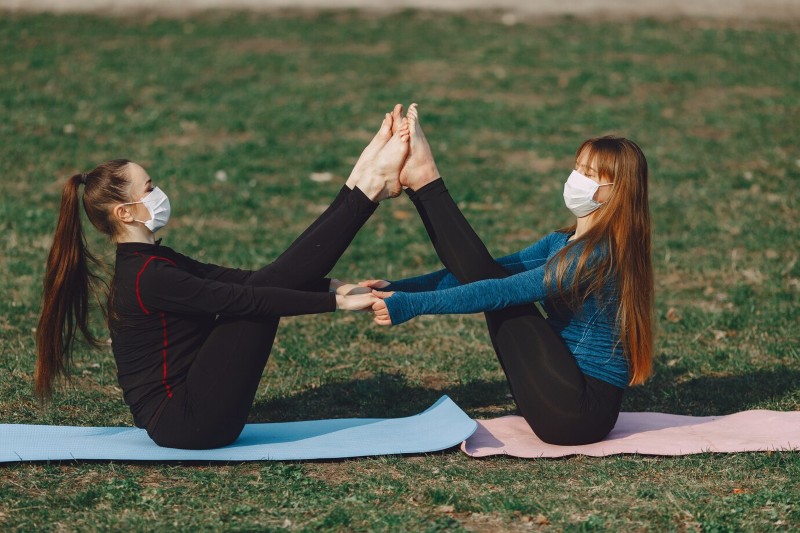
Step 1: Choose a Yoga Teacher Training Program
RYT certification courses include the 200-hour, 300-hour, and 500-hour ones. Each course varies in terms of experience and aspirations and is quite different in length, intensity, and details.
- 200-Hour Yoga Teacher Training: This course is the foundational course meant for beginners. It covers such things as foundational postures, anatomy, teaching techniques, and yogic philosophy. If this is your first foray into the yoga teaching world, this is where your journey should begin.
- 300-Hour Yoga Teacher Training: The 300-hour course is strictly for those who already possess their 200-hour qualification; in short, those who wish to have an advanced knowledge of techniques and teaching methodologies, including sequencing.
- 500-Hour Yoga Teacher Training: This one’s the most comprehensive. Combining 200 and 300 hours, when done, you can apply for an RYT 500, and be prepared to teach at an advanced level.
Some examples of schools offering these programs include Rishikul Yogshala, which has all levels of training recognized by Yoga Alliance. Their courses find a balance between traditional yogic wisdom and current teaching techniques so that pupils leave with confidence in their ability to teach.
Step 2: Complete the Program Requirements
Once you have decided which course is appropriate for you, you must fulfill the requirements of that program. The vast majority of yoga teacher training programs utilize an integrative curriculum, which is also constructed to meet Yoga Alliance requirements. This often includes such subjects:
- Asana Practice: You learn the asanas and how to do them safely. Part of that is how to take students through sequences.
- Pranayama and Meditation: These are breathing techniques, as well as mindfulness practices, which go hand in hand with the physical practice of yoga.
- Anatomy and Physiology: This forms the basic level of teaching yoga as it involves knowledge at a basic level about how the body works. You will learn about muscular, skeletal, and nervous systems so that you can give safe direction to your students.
- Teaching Methodology: Teaching effectively is one of the most important things a YTT student will learn. In this training, you will learn how to make class plans, modify postures, and make adjustments for your students.
- Yoga Philosophy and Ethics: That’s more than just a physical practice. Yogic philosophy embraces texts like the Yoga Sutras of Patanjali and the Bhagavad Gita; YTT teaches how to teach yoga and sound ethical guidelines for good teachership.
Step 3: Register with Yoga Alliance
Here’s how it goes:
- Create a Yoga Alliance Account: You must first sign up at yogaalliance.org with every detail regarding your YTT program and upload your completion certificate.
- Submit Application: Verification is to be done by the applicant and submitted to the council with verifications from Yoga Alliance. After submitting your certificate, your application will be under verification. Once accepted, you will be officially granted RYT status.
- Pay Membership Fees: Once accepted, you might be liable to pay an annual fee to maintain your registration at Yoga Alliance.
- Start Teaching: Congratulations! So you have officially registered as a yoga teacher. With your RYT degree, you are qualified to teach in studios, gyms, or even online. Many teachers host retreats or workshops and teach around the globe as well.
Keep in mind that Yoga Alliance requires RYTs to complete continuing education (CE) to maintain their certification. This encourages teachers to stay updated on new techniques and knowledge.
Read More – The ‘Who, What, Why and How’ of the Yoga Alliance
The Transformative Benefits of Becoming a Yoga Teacher
Yoga is much more than physical postures, for it brings forth the formation of a complete practice that produces growth and development in and through the mind, body, and soul. While yoga practice itself may change lives, teaching is even more rewarding and life-changing.
As the relevance of yoga is increasing worldwide, demands for qualified yoga teaching increased. Practically guiding other people through this ancient practice becomes both fulfilling and a good vocation. Many young and old people now embrace yoga teacher training programs, realizing the deep benefit of sharing the gift of yoga.
Opportunities for personal growth are one of the most rewarding factors in being a yoga teacher. The teaching of yoga helps one grow as a person, and it is an opportunity to push oneself deeper into the understanding of yoga, not only as a physical movement but also as a philosophy that transforms lives.
Being a yoga teacher in today’s world is a tremendous responsibility. Above all, playing an important role in keeping and passing on the cultural heritage of yoga, with materialism and frantic lives attributing to some of the real meanings of the olden times being lost nowadays, being a yoga instructor today is not just teaching people to do the poses; it is teaching people how to have a balanced life, full of mindfulness and rich experiences. Yogis, therefore, are torchbearers of this wisdom that passes on knowledge to both them and their students on how to find peaceful tranquillity.
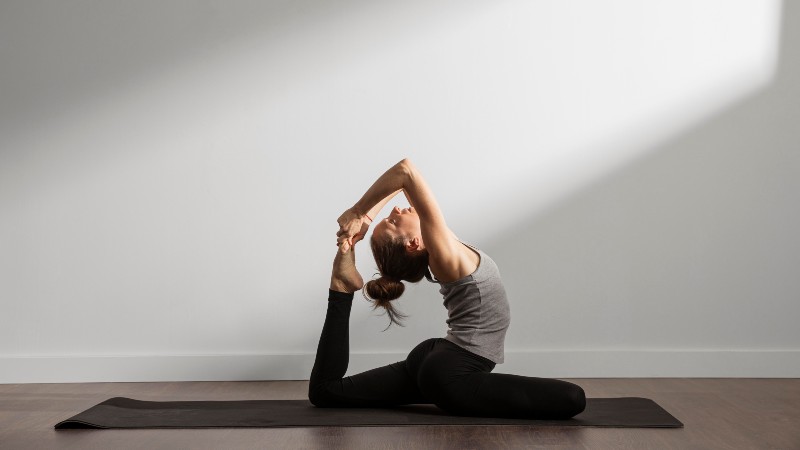
Most importantly, it is a space that is not about offering to others but is also full of self-fulfillment. Yoga is a journey towards self-discovery, and teaching it offers enormous opportunities for the continuous growth of the person to introspect. It lets one dig into the philosophical and spiritual content of the practice. Becoming a teacher involves the journey toward a more thoughtful, comprehensive lifestyle that, as one can imagine, is fantastically fulfilling in itself.
On the other hand, improved physical health also benefits the yoga teachers. Regular practice and teaching keep the instructors in the best shape of their lives, having increased strength, flexibility, and endurance. However, beyond that, mental-emotional benefits are profound. Yoga teachers often feel more grounded, present, and emotionally resilient, basically bringing themselves into a better, more present, and more emotionally resilient state while teaching others to become mindful.
In a stressful, anxiety-ridden, and burnout-prone world, such a teaching of yoga is needed and fulfilling instead of the traditional corporate grind. It especially appeals to young people as it offers not only personal fulfillment but also an opportunity to change the world for the better.
Ideally, it should essentially turn a profession into a way of life and bring rewards in both the physical as well as the mental and spiritual realms. It could be quite an immense journey for those people called to share the practice with others. Every yoga teacher who steps into the role brings a bit more balance and harmony to the world, one breath at a time.
The Importance of Accreditation with Yoga Alliance
Accreditation with Yoga Alliance is also important in your selection into the yoga teacher training program. It means that the program has met the global standard of quality and depth of teaching. Indeed, the Yoga Alliance has gained a good reputation in the international yogic community, and the RYT certification is valid in most countries. It increases your chances of getting employment but also assures the potential students that you have received your training from a reputable institution. With Yoga Alliance accreditation, you gain the trust and credibility needed to teach yoga anywhere in the world.
Besides, the association with Yoga Alliance will give you lifelong support. As a member, you are connected to thousands of teachers, and there are resources that help you stay up-to-date on various teaching techniques. The ongoing flow of knowledge and networking makes you relevant in an ever-changing field.
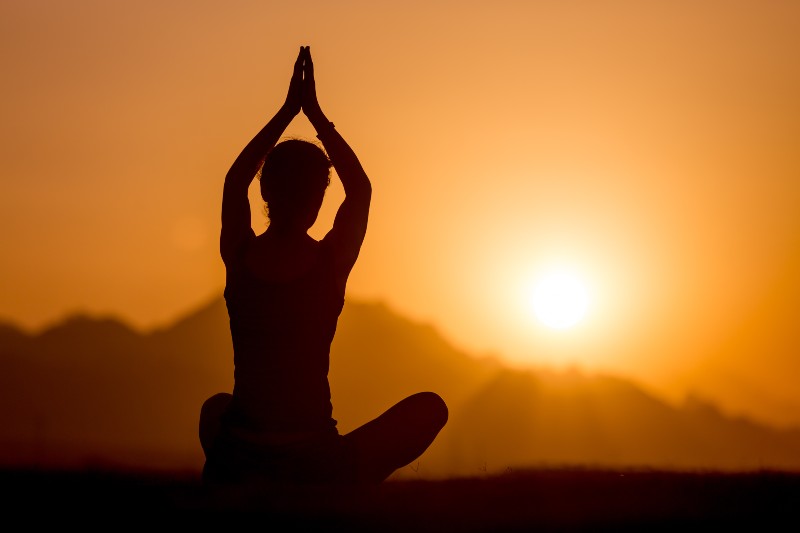
The Flexibility of Yoga Teaching Careers
Probably, one of the greatest benefits of becoming an RYT is how versatile it can be concerning your career. Perhaps you need to work part-time or full-time, or maybe you want to have your own yoga studio someday in the future; whatever you desire, it is limitless for a yoga teacher. With an RYT certification, you can teach in all settings:
- Yoga studios: Most yoga teachers find their way into a studio as a traditional route for employment. Then, they can seek guidance from experienced mentors to level up.
- Fitness centers and gyms: Modern gyms offer yoga classes as part of any overall fitness programs. These create a new channel for RYTs.
- Corporate wellness programs: As companies become more conscious of improving workplace wellness, they are opening up opportunities to offer yoga as part of their services through corporate wellness programs.
- Online teaching: With so many virtual platforms now available, online yoga instruction is increasingly accessible for those RYTs with this option. This will allow you to teach all around the world and set flexible schedules for yourself.
Also, many yoga teachers lead retreats or workshops; this will give another chance to explore the world and share your knowledge with different communities across the globe. Many of the RYTs like teaching in conjunction with different wellness practices, such as meditation, nutrition, and life coaching; these align nicely with a holistic understanding of health and wellness.
Teaching Specialisations to Boost Your Career
Once you are an RYT, you can acquire many specializations to stand out in a competitive yoga marketplace. Specializing in an area can make you more attractive not only to employers but to students as well. Some of the most common specializations include:
- Prenatal yoga: Specialising in prenatal yoga will present the student with a specialty that requires deeper knowledge of the adjustments that occur in the body during pregnancy and how safely to modify postures to enable them to continue moving during the entire process.
- Trauma-informed yoga: This is a specialization that trains students to teach yoga to traumatized students. Trauma-informed yoga can provide an important avenue for healing and emotional discharge and is commonly taught within mental health facilities.
- Restorative yoga: This yoga focuses on body and mind relaxation and rejuvenation. Teachers learn how to guide the students into restorative postures in order to help the body and mind recover from stress.
- Teaching yoga to children: Teaching children is definitely not the same as teaching adults. The yoga teacher for children learns how to communicate with younger students in a way that is fun, creative, and engaging, with yoga being accessible and fun for kids.
- Yoga therapy: A yoga therapist will work with a client to identify areas where that person needs intervention toward a better physical, mental, or emotional outcome. Such a focus needs great knowledge of anatomy and physiology, as well as what it means to apply and teach the therapeutic aspects of yoga.
Read More – How to Choose The Best Yoga Alliance School in India
The Role of Mentorship in Your Teaching Journey
Although getting a mentor is very rare in the success journey of a yoga teacher, if you get one right after completing your 200-hour yoga teacher training, it will certainly make the transition to teaching pretty smooth. A mentor teaches you class planning and how to teach and can coach you on most real-life challenges in a yoga studio.
Further learning of a yoga teacher is also facilitated by mentorship. It is an opportunity for you to learn under the direct guidance of someone who has more experience, helping you refine your skill sets and discover your very own teaching style. Some yoga teacher training institutes have advanced courses and take it up a step further by providing mentoring. This way, a yoga student can directly learn from experienced teachers.
Why Choose Rishikul Yogshala for Your YTT?
Rishikul Yogshala is one of the most reputed schools for YTT. The place is well-known for its traditional yet modern approach to education in yoga and offers 200-hour, 300 Hour Yoga Teacher Training In India, and 500-hour certified yoga alliance certification teacher training programs. Its location in the tropical heart of India, Kerala, makes it the perfect place to stay where a deep practice can serve as a master in setting up your teaching skills.
Courses at Rishikul Yogshala are focused on personal growth and authentic teaching methods with deep knowledge of yoga. Their curriculum is placed around helping you develop both as a practitioner and as a teacher, making you ready to face all the realities of teaching yoga in today’s world.

Read More – Amazing Yoga Benefits to Keep You in Good Health – Rishikul Yogshala
Taking the First Step
It’s a great moment of empowerment when you get your registered yoga teacher certification from Yoga Alliance. Witness the fulfilment of completing a 200 Hour Yoga Teacher Training toward a certificate. When well guided, such knowledge builds confidence and brings the right credentials for sharing the practice of yoga that can change the lives of others. Experience this life-changing journey with a Yoga Teacher Training India or rejuvenate your mind and body with a Yoga Retreat In India for ultimate growth and well-being.

